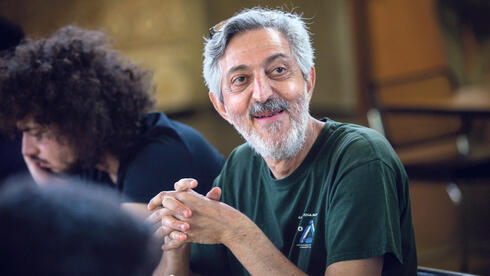That complexity is a problem when AI models need to work in real time in a pair of headphones with limited computing power and battery life. To meet such constraints, the neural networks needed to be small and energy efficient. So the team used an AI compression technique called knowledge distillation. This meant taking a huge AI model that had been trained on millions of voices (the “teacher”) and having it train a much smaller model (the “student”) to imitate its behavior and performance to the same standard.
The student was then taught to extract the vocal patterns of specific voices from the surrounding noise captured by microphones attached to a pair of commercially available noise-canceling headphones.
To activate the Target Speech Hearing system, the wearer holds down a button on the headphones for several seconds while facing the person to be focused on. During this “enrollment” process, the system captures an audio sample from both headphones and uses this recording to extract the speaker’s vocal characteristics, even when there are other speakers and noises in the vicinity.
These characteristics are fed into a second neural network running on a microcontroller computer connected to the headphones via USB cable. This network runs continuously, keeping the chosen voice separate from those of other people and playing it back to the listener. Once the system has locked onto a speaker, it keeps prioritizing that person’s voice, even if the wearer turns away. The more training data the system gains by focusing on a speaker’s voice, the better its ability to isolate it becomes.
For now, the system is only able to successfully enroll a targeted speaker whose voice is the only loud one present, but the team aims to make it work even when the loudest voice in a particular direction is not the target speaker.
Singling out a single voice in a loud environment is very tough, says Sefik Emre Eskimez, a senior researcher at Microsoft who works on speech and AI, but who did not work on the research. “I know that companies want to do this,” he says. “If they can achieve it, it opens up lots of applications, particularly in a meeting scenario.”
While speech separation research tends to be more theoretical than practical, this work has clear real-world applications, says Samuele Cornell, a researcher at Carnegie Mellon University’s Language Technologies Institute, who did not work on the research. “I think it’s a step in the right direction,” Cornell says. “It’s a breath of fresh air.”

Sarah Wilson is your guide to the latest trends, viral sensations, and internet phenomena. With a finger on the pulse of digital culture, she explores what’s trending across social media and pop culture, keeping readers in the know about the latest online sensations.







